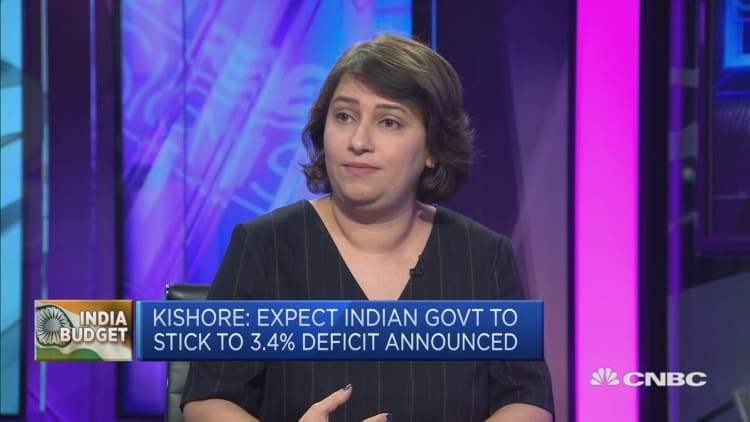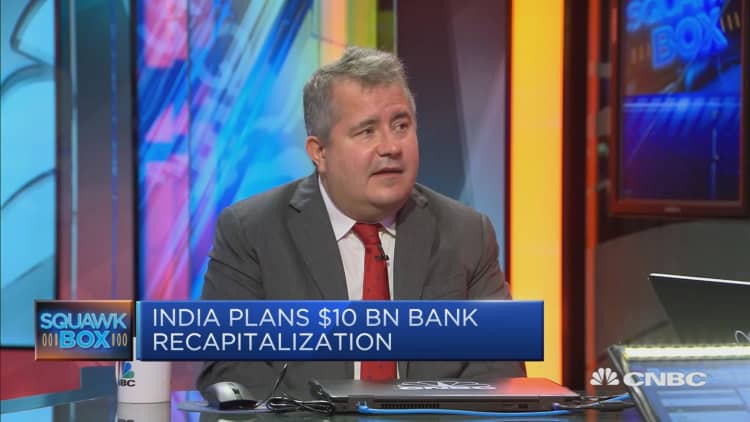India needs this year's monsoon season to deliver heavier rainfall that will boost farm output and economic growth — but the country has been disappointed so far.
Asia's third-largest economy ended June — the first month of the monsoon season — with total rainfall 33% below its 50-year average, according to Citi, which cited data from the India Meteorological Department. Rain has picked up in July and the total rainfall this month will affect India's agricultural output and overall economic momentum, analysts said.
"Major crop-sowing takes place in July. This is the critical monsoon month for the agriculture sector when more than 50.0% of the Kharif crop sowing takes place," analysts from Citi wrote in a report last week. Kharif crops include rice, maize, sorghum and cotton, and are planted during the monsoon season.
The agriculture sector in India is both economically and politically important. The industry accounts for around 14% of the country's $2.7 trillion economy and 42% of total employment, according to Rajiv Biswas, chief economist in Asia Pacific for consultancy IHS Markit.
The overall Indian economy remains very vulnerable to the monsoon, since poor rainfall can significantly reduce agricultural production.Rajiv Biswaseconomist at IHS Markit
About one-third of India's manufacturing output — which makes up around 18% of the country's gross domestic product — is linked to turning agricultural products into food, Biswas noted. And with around 55% of India's arable land dependent on rain, the monsoon season could sway economic activity in the agriculture sector and industries linked to it.
India's economic growth slumped to 5.8% in the January-to-March period compared to 6.6% in the previous three months due in large part to poor performance in the agriculture and manufacturing industries.
"The overall Indian economy remains very vulnerable to the monsoon, since poor rainfall can significantly reduce agricultural production," Biswas told CNBC in an email.
"If farm incomes are reduced by a poor monsoon season, it also impacts negatively on agricultural processing output (as well as) retail trade and other services in rural regions," he added.

In recent years, rain has become even more important for India as dryer monsoons have caused a water supply crisis in the country to worsen. A government think tank, the National Institution for Transforming India, said in a report last year that 21 Indian cities — including New Delhi, Hyderabad and Chennai — could run out of groundwater by 2020.
In addition to reduced rainfall in recent years, factors including increased demand and inefficient usage have contributed to India's water shortage, said Radhika Rao, an economist at Singaporean bank DBS.
The late arrival of the annual monsoon is "feeding worries over scarce water supply," she wrote in a note last week.
India's 'high priority'
Alongside the lackluster rainfall, farmers have sowed fewer crops including rice and cotton compared to the same time last year, local media reported.
That slow start to the monsoon harvest season has prompted the government to take action: It raised the minimum support price for all of the current season's crops, according to local media. That move could encourage farmers to raise their output, which then benefits other related businesses such as sellers of tractors and fertilizers.

Such an increase in economic activity also boosts consumer demand in the rural areas of India, and helps Prime Minister Narendra Modi fulfill his promises to improve the lives of farmers, according to the reports.
The economic significance of Indian farmers and the sheer number of them are among reasons why they're often at the center of political contests and government policies. Ahead of the recent general elections, which Modi won, farmers were the big winners in the interim budget tabled in February by the government.
While many government measures have helped to support farmers' incomes in the event of bad monsoon seasons, reducing the agriculture sector's reliance on rain is a more important issue to tackle, said IHS Markit's Biswas.
"The Indian government needs to put a high priority on investing heavily in improved water storage systems for the agricultural sector," he said. "This would help to improve India's resilience to bad monsoons through agricultural infrastructure such as dams and improved irrigation systems."
— Reuters contributed to this report.


